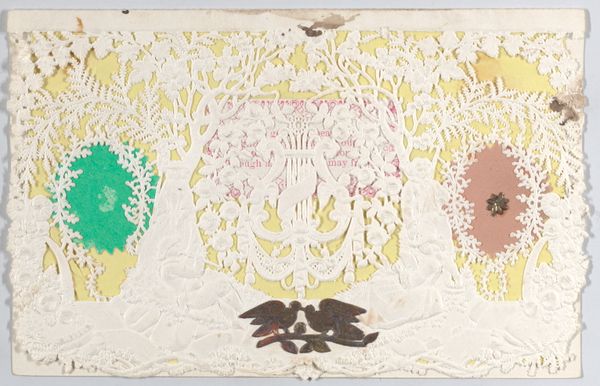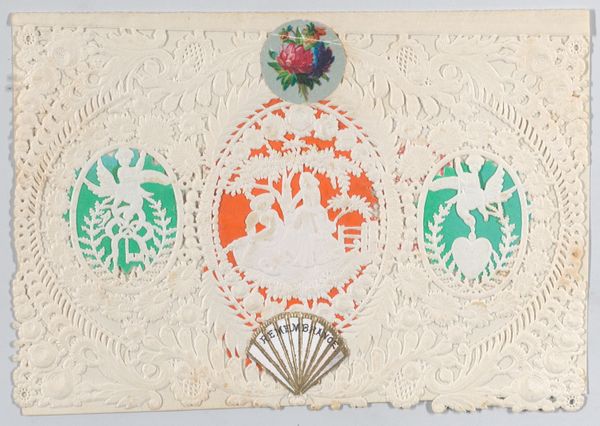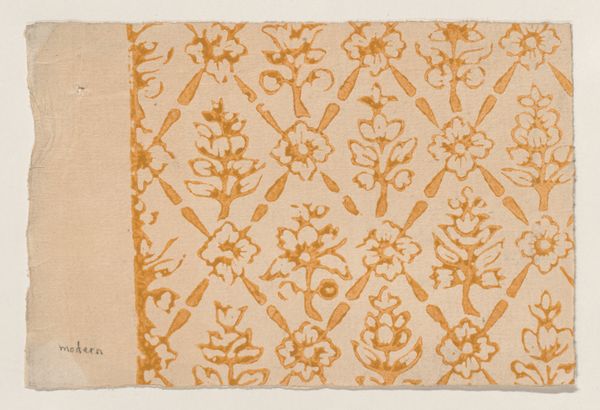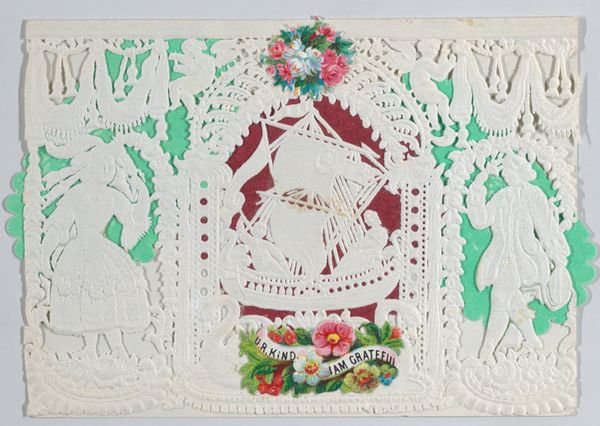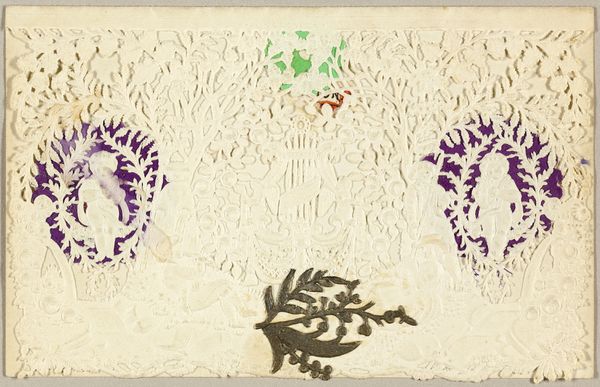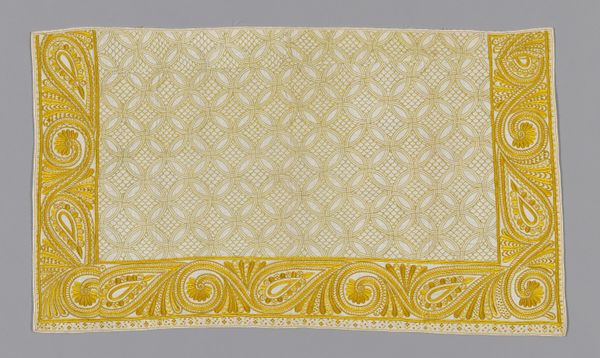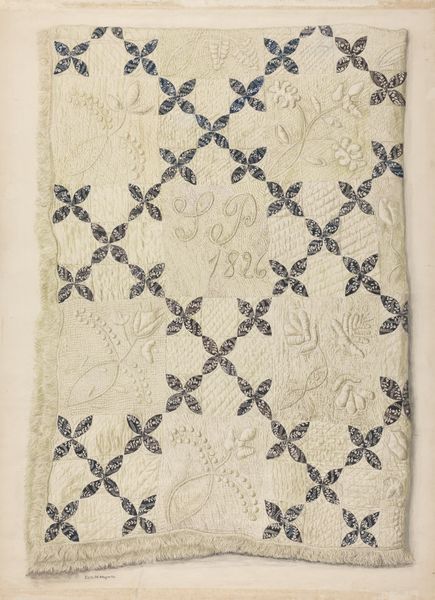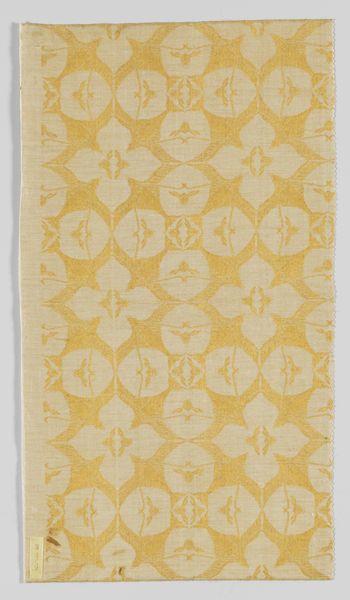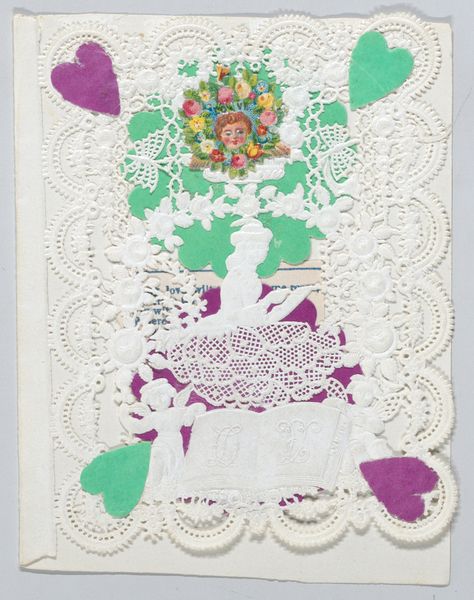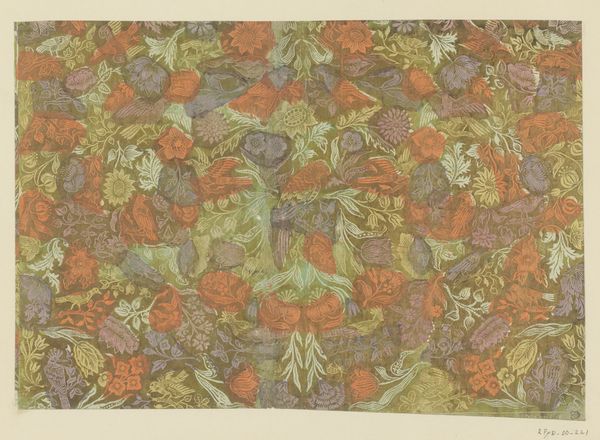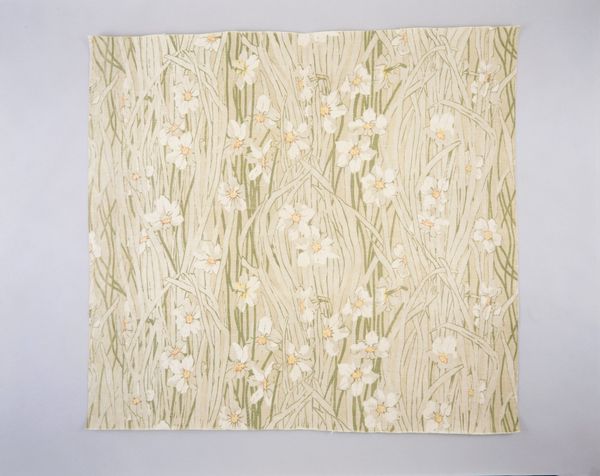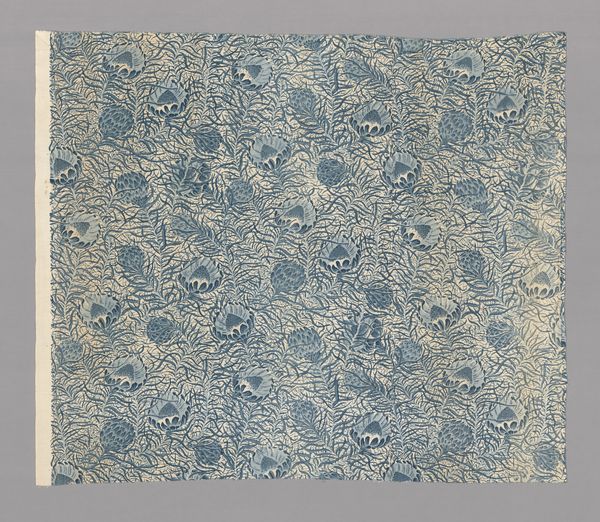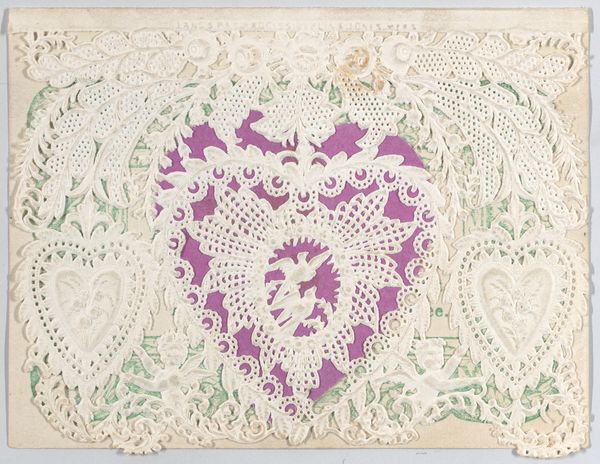
Dimensions: Width: 4 15/16 in. (12.5 cm) Length: 3 1/8 in. (8 cm)
Copyright: Public Domain
Curator: Let’s spend a moment with this intriguing piece titled "Valentine," made sometime between 1845 and 1875 by an anonymous artist. It’s a print, likely made from paper, and it's housed right here at The Met. Editor: It's so delicate! I'm struck by how much detail is achieved through what appears to be a subtractive process – all the cutting away, leaving these almost ethereal figures behind. Curator: Absolutely. It reflects a broader history of women and craft. The sentimental images of genre painting such as this would have appealed to a female domestic sphere in the Victorian era. Notice how the cut paper shapes echo through floral patterns and lace, materials and textures commonly associated with femininity? The act of giving a valentine can be seen as a socially constructed exchange. Editor: Interesting, but my eyes keep getting drawn to the materiality, the work involved. These meticulously cut shapes, it must have taken a considerable amount of time to produce. I see figures sitting amongst flora, a harp floating centrally – the labor! What’s more is the artist employed such meticulous labor to, from all sources, be unknown and for a product as readily discarded as a paper greeting. Curator: Yes, and it speaks to tensions within constructions of femininity, too. This act of love exists within very restricted boundaries set by patriarchy. Its anonymous origin reflects the constraints put on women's creative labor. Their artwork could exist as adornment for the domestic realm without their claim. I consider this in relation to works that claim identity, question gender, explore racial boundaries, and navigate complex socio-political concepts. How might such ephemeral material provide unique perspectives on these conversations? Editor: So much can be considered if you move past the romance of Valentine's Day to view labor as its base materiality. What is romance beyond societal expectations? With such considerations, it changes everything about how one appreciates this work and all artworks that consider materiality within process, material, and even labor! Curator: A beautiful, and powerful reminder. This seemingly sweet "Valentine" contains multitudes if we begin to question its many material conditions. Editor: I will never look at Valentine's Day the same way again, now knowing about the labour and social constraints for this delicate token of affection.
Comments
No comments
Be the first to comment and join the conversation on the ultimate creative platform.
